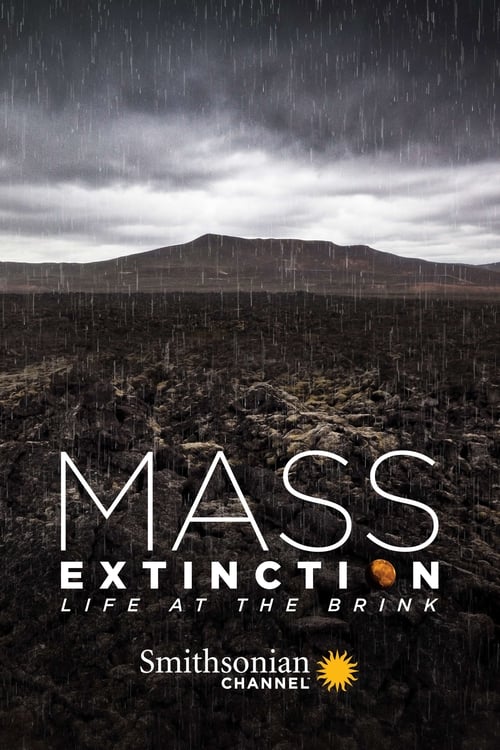
Ask Your Own Question
What is the plot?
More Movies Like This
Browse All Movies →
What is the ending?
In the ending of "Mass Extinction: Life at the Brink," the film culminates in a stark portrayal of the consequences of human actions on the environment. The narrative emphasizes the urgency of addressing climate change and biodiversity loss, showcasing the dire state of the planet and the potential for future devastation if changes are not made. The film concludes with a call to action, urging viewers to recognize their role in the fight against mass extinction.
As the film approaches its conclusion, the scenes shift to a series of powerful visuals depicting the impact of climate change and habitat destruction. The camera captures the stark contrast between thriving ecosystems and those that have been ravaged by human activity. The emotional weight of these images is palpable, as viewers witness the suffering of various species on the brink of extinction.
In one poignant scene, the film focuses on a group of scientists and environmentalists who have dedicated their lives to conservation efforts. Their faces reflect a mix of determination and despair as they discuss the challenges they face in their work. The dialogue reveals their internal struggles, as they grapple with the enormity of the task ahead and the potential futility of their efforts in the face of overwhelming odds.
As the narrative unfolds, the film intersperses these personal stories with broader statistics and facts about the accelerating rate of extinction. The characters express their fears for the future, not only for the planet but for future generations. Their motivations are rooted in a deep love for nature and a desire to leave a better world behind.
The final scenes are marked by a sense of urgency. The film presents a montage of various species, some of which are on the verge of disappearing forever. The visuals are haunting, showcasing the beauty of these creatures juxtaposed with the reality of their impending loss. The emotional impact is heightened as the audience is left to ponder the consequences of inaction.
In the closing moments, the film shifts to a hopeful note, emphasizing the importance of collective action. The characters rally together, sharing their vision for a sustainable future. They encourage viewers to take part in the movement to protect the planet, highlighting the power of individual choices in making a difference.
The film ends with a powerful message: while the situation is dire, there is still hope if humanity unites to combat the forces driving mass extinction. The fate of the main characters is left somewhat open-ended, as they continue their fight for conservation, embodying the resilience and determination needed to face the challenges ahead. The film concludes with a call to action, urging viewers to reflect on their own impact and to join the fight for a sustainable future.
Is there a post-credit scene?
The movie "Mass Extinction: Life at the Brink," produced in 2014, does not contain a post-credit scene. The film focuses on the critical issues surrounding biodiversity loss and the potential for a mass extinction event, emphasizing the urgency of environmental conservation. It concludes with a call to action, urging viewers to reflect on the impact of human activities on the planet and the importance of preserving life. The ending reinforces the film's themes without any additional scenes after the credits.
What specific events led to the mass extinction depicted in the film?
The film explores various catastrophic events that contribute to mass extinction, including climate change, habitat destruction, and the impact of human activity on biodiversity. It details how these factors interconnect and lead to the decline of numerous species.
Which species are highlighted as being most at risk in the documentary?
The documentary focuses on several species that are critically endangered, including polar bears, various amphibians, and certain bird species. It illustrates their struggles for survival in a rapidly changing environment.
How do the filmmakers portray the emotional impact of extinction on wildlife?
The filmmakers use poignant imagery and narratives to convey the emotional weight of extinction, showcasing the struggles of animals in their natural habitats, their fight for survival, and the loss of biodiversity that affects entire ecosystems.
What role do scientists play in the narrative of the film?
Scientists are depicted as both researchers and advocates for conservation. They share their findings on the causes of extinction and the urgency of the situation, often expressing frustration and hope as they work to find solutions.
How does the film illustrate the connection between human actions and species extinction?
The film provides a detailed examination of how human activities, such as deforestation, pollution, and climate change, directly contribute to the decline of species. It includes interviews with experts who explain the consequences of these actions on the planet's biodiversity.
Is this family friendly?
"Mass Extinction: Life at the Brink" is a documentary that explores the critical state of biodiversity and the threats facing various species due to human activity and environmental changes. While it is educational, there are several aspects that may be potentially objectionable or upsetting for children or sensitive viewers:
-
Graphic Imagery: The film includes scenes of endangered species and their habitats being destroyed, which may be distressing to some viewers.
-
Depictions of Extinction: The documentary discusses the extinction of various species, which can be a heavy and emotional topic, particularly for younger audiences.
-
Environmental Destruction: Visuals of deforestation, pollution, and climate change effects may evoke feelings of sadness or anxiety about the state of the planet.
-
Interviews with Experts: Some segments feature scientists discussing the dire consequences of inaction regarding conservation, which may be overwhelming for sensitive viewers.
-
Emotional Narratives: Personal stories of individuals affected by environmental changes can be poignant and may resonate deeply, potentially leading to feelings of despair or helplessness.
Overall, while the film aims to raise awareness and educate about important environmental issues, its content may not be suitable for all children or sensitive individuals.























